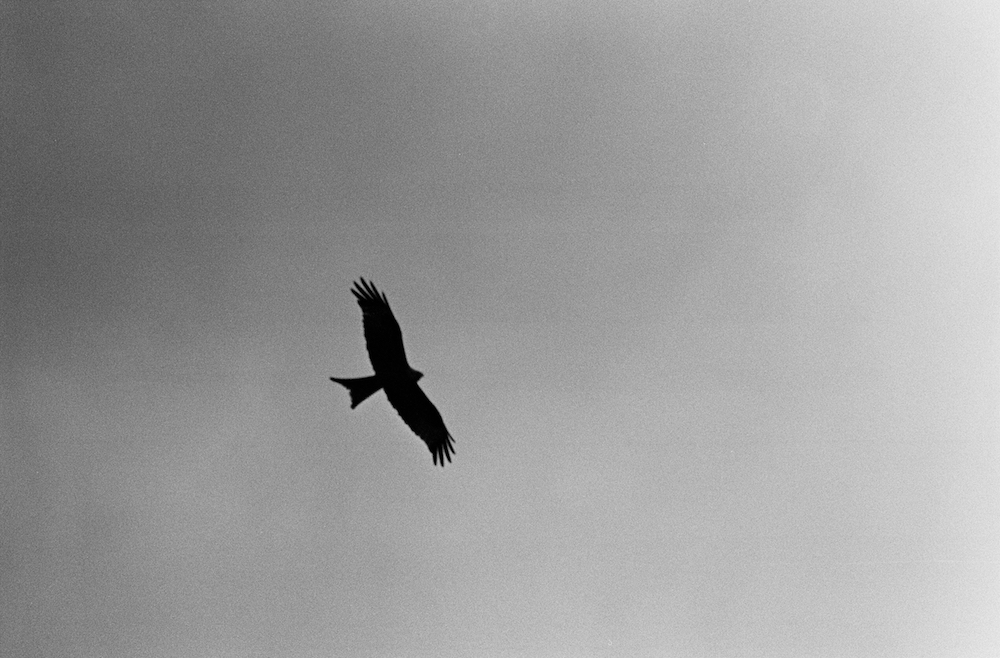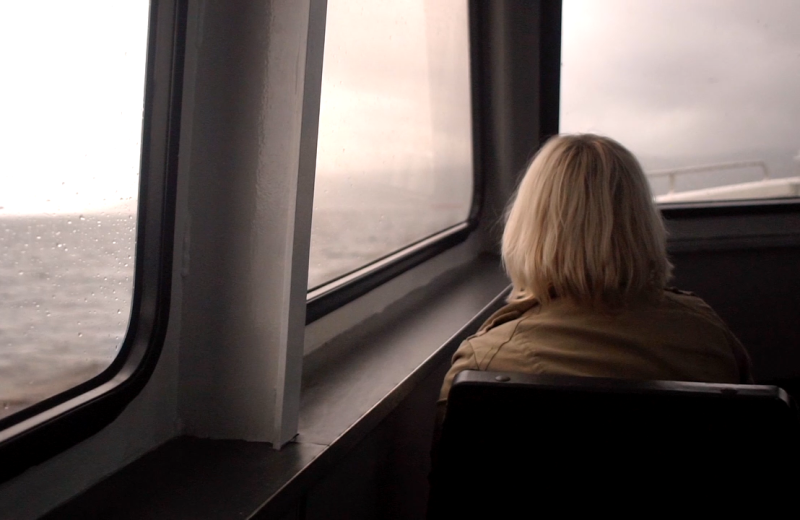Do writers need a nationality?
/Photo: Chris Gilbert
By Vesna Main:
I am a Croatian writer. At least that’s what I was called in recent reviews of my debut collection of short stories. As a writer trying to find an audience, believe me, I am pleased that anyone would write about my work, but I baulked at this apparent identification of me, a writer, with a nation. Yes, I was born in Zagreb and lived there until my early twenties. Does that make me a Croatian writer?
I write in English. I write in English because that is the language I fell in love with when I first read Shakespeare. I write in English because that is the language I know better than any other. Does that make me an English writer?
I have lived in Europe and in Africa. Now, after almost four decades in Britain, I am fortunate to be able to divide my time between England and France. I feel comfortable in both countries because I appreciate their respective cultures, by which I mean their art and literature. But I do not belong to either. In fact, I have never felt a sense of belonging to any country or nation. WG Sebald’s narrator in Vertigo speaks for me when he says that when it comes to nations, it is best to be associated with ‘none at all’. Similarly, Virginia Woolf writes that ‘as a woman I have no country. As a woman, I want no country. As a woman, my country is the whole world.’
I am proud to be a citizen of the world, one of those eternal wanderers, Ahasueruses of this world who, as our Prime Minister asserted, sending chills down our spines as her words echoed Nazis’ view of the Jews, are citizens of nowhere. In fact, I am puzzled by narratives of belonging. For me, the story of Odysseus is a happy one, but not because the hero returns home safely to Ithaka, rather because, as the Alexandrian Greek poet Cavafy teaches us, ‘Ithaka gave you the marvellous journey’. It is the journey and the wandering that matter, not the return home. After all, I don’t think of home as a place, or a geographical region. Therefore, it can be anywhere and nowhere.
When it comes to literature, the love of my life, I feel closest to contemporary European writing, particularly French and German and, if pushed, would admit to their influence on my work. In fact, it is this sense of not belonging to a nation or a country, this sense of strangeness, I would argue, that feeds my writing. My alienation brings about my voice, my perspective on what I write and my relationship with the language.
So, what is it, I wondered, that is supposed to make me a Croatian writer? What is it that makes most people insist on a label of nationality? Is it simply a shorthand to enable communication? Or is it an expression of a belief that everyone ought to belong to a nation and that those who do not are somehow morally deficient and untrustworthy?
As serendipity would have it, while in my teens, struggling with The Life and Opinions of Tristram Shandy, I came across a phrase by Ignatius Sancho, an eighteenth-century freed slave, born to a captured West African woman on the notorious middle passage, and later a resident of Westminster. Writing a letter to the author of the novel, his friend Laurence Sterne, Sancho remarked that he didn’t wish to express an opinion on a particular political issue since he was ‘only a lodger…and hardly that.’ The words accurately described my own feelings about the place where I was born and where I grew up. Despite my comfortable middle-class existence and a loving family, my home felt temporary, a place that I knew I was bound to leave. But Sancho’s words made me understand I didn’t have to belong; it was fine to be a lodger, free of national allegiance, free to choose a culture, a country, a language and, by implication, an identity. Katja Petrowskaya, whose first language is Russian, writes in Maybe Esther, a wonderful text written in German, that we should not be ‘defined by our living and dead relatives and where they resided, but by means of our language’. And in Joyce’s A Portrait of the Artist as A Young Man, Stephen Dedalus claims that ‘nationality, language, religion’ are constraints. He vows to ‘fly by those nets’. I vowed the same. While nationality was not an issue for me – my passport was only an aid to help with international bureaucracy – I flew ‘by the net’ in choosing to write in English, a language I was not born into. This choice, deliberate and voluntary, resulted from my determination not to be trapped or pigeonholed in a particular historical and cultural context. I wished to construct my chosen identity by rejecting those I had been saddled with. As Thomas Bernhard writes, ’we can leave our place of birth if it threatens to suffocate us’.
My alienation from what was reckoned to be my native country, and from my fellow nationals, extended to everywhere and everyone. I have never been anything but a lodger in all the places I have ever lived. There were only occasional moments, fleeting, like a dream, existing more in time than in space, when I glimpsed the possibility of home or the recognition of something familiar, such as where I found myself face to face with another human being who shared my passion for a painting or a text. I felt at home when in Zagreb a sculptor friend, Ivan Lesiak, took me to see Andrei Rublev, soon after my seventeenth birthday, or when another friend, years later in London, introduced me to the work of Chris Marker and we watched La Jetée. I was in ‘my own country’ at those moments with the people who shared my interests. And here I am reminded of the words of the poet Ezra Pound, who was displaced in more than the usual sense, and who writes of being ‘homesick after my own kind’, or feeling ‘wistful for my kin of the spirit’. Similarly, Robert Walser writes that ‘one belongs in the place one longs for.’
At university, in Zagreb, in love with Shakespeare, I had a brief fantasy that his country was my imaginary home. That notion was soon dispelled when as a postgraduate in England, I felt lonely and lost outside my privileged enclave of Elizabethan studies. However, far from my displacement bothering me, I remembered the words of Sancho and I accepted my alienation as part of who I am. But I also learned not to disagree with the old ladies on city buses who started a conversation and said that I must be homesick. In their eyes, only a monster wouldn’t miss their country. There would have been no point in my telling them I aspired to Roderigo’s apparently derogatory description of Othello as ‘an extravagant and wheeling stranger of here and everywhere’.
If you still feel I should belong somewhere, I have good news: as I have been suggesting, I have at last found a country, an elusive, attractive place which obsesses me, which fills my days with meaning, which I love and where, for the first time, I feel ‘at home’. I write. Writing is my country. It took me a while to find an entry point. I feared becoming lost, if not expelled in shame, labelled a failure. Worst of all, I didn’t have a language in which to write since I had stopped reading in Croatian, my first language, many years ago. At the same time, I didn’t dare write in English. Eventually, twenty years ago, I threw caution to the wind (I could always fail better, as I learned from another displaced writer) and embarked on a life-long journey. Like every journey, it has its challenges, its wrong turnings, pleasures and frustrations, and it often brutally exposes my shortcomings. But I carry on.
My fellow nationals are other writers, some published, some toiling in patient obscurity. I have chosen to belong with them. And if you ask me whether I miss this country of writers on the days when life intervenes, yes, absolutely, I do. I am ‘normal’, after all.
My favourite writers of the twentieth century – who include Franz Kafka, James Joyce, Samuel Beckett, Thomas Bernhard, WG Sebald and Gabriel Josipovici – are lodgers too, displaced in one direction or another. Not belonging exclusively to the literary tradition of their birth countries, whether or not resident there, they operate in the space created by the difference between the native and the foreign, between the established, the dominant, and the predictable on the one hand, and the alternative, the marginal, the unforeseen on the other.
None of the characters I create in my novels or short stories is me, but I share with them their sense of alienation, the feeling of being citizens of everywhere and nowhere. What guides the lives of the protagonists of my short stories, what makes them ‘belong’, is a passion. An ex-prostitute dedicates herself to helping young women escape her former trade; her work is driven by a deferred maternal instinct, a wish to protect the daughter she lost to adoption from the fate of her own youth. An elderly man pursues his obsession for collecting books until they literally squeeze him out of existence. A woman bakes all day, hoping that somebody will turn up to share her cakes and pastries, but ends up carrying them to the park for the ducks. A concert-goer recognises the face of a man sitting next to her as a face from her memory and cannot bear the thought that she will never see him again.
It seems appropriate that The Life and Opinions of Tristram Shandy, the text that exiles the reader to a position of permanent uncertainty, led me to Sancho who, in turn, made me recognise my status as a lodger. More than a hundred years after Sterne’s death, Nietzsche still considered him ‘the most liberated spirit of our time’. I wonder what the novelist would have made of our Prime Minister’s strictures about citizenship.
This from a Croatian writer.
About the author:
Vesna Main was born in Zagreb, Croatia, where she studied comparative literature before obtaining a doctorate from the Shakespeare Institute in Birmingham, England. She was a lecturer at universities in Nigeria and the UK and has worked at the BBC She has written articles, reviews and short stories for daily newspapers and literary journals.
She has had two novels published. A collection of short stories, Temptation: A User’s Guide, was brought out by Salt in 2018 and you find out more and order direct from the publisher here.
She lives in London and writes in English, her second language.

























